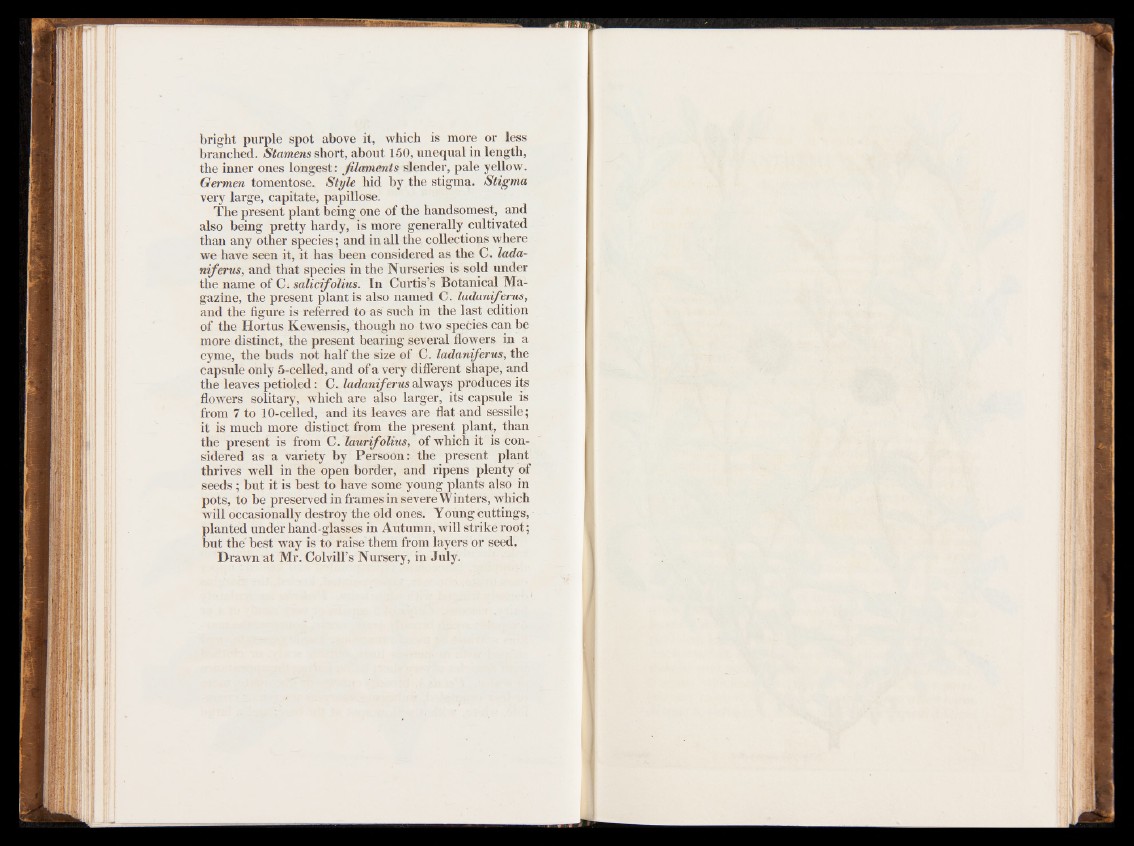
bright purple spot above it, which is more or less
branched. Stamens short, about 150, unequal in length,
the inner ones longest: [filaments slender, pale yellow.
Germen tomentose. Style hid by the stigma. Stigma
very large, capitate, papillose.
The present plant being one of the handsomest, and
also being pretty hardy, is more generally cultivated
than any other species; and in all the collections where
we have seen it, it has been considered as the C. lada-
niferus, and that species in the Nurseries is sold under
the name of C. salicifolius. In Curtis’s Botanical Magazine,
the present plant is also named C. ladaniferus,
and the figure is referred to as such in the last edition
of the Hortus Kewensis, though no two species can be
more distinct, the present bearing several flowers in a
cyme, the buds not half the size of C. ladaniferus, the
capsule only 5-celled, and of a very different shape, and
the leaves petioled: C. ladaniferus always produces its
flowers solitary, which are also larger, its capsule is
from 7 to 10-celled, and its leaves are flat and sessile;
it is much more distinct from the present plant, than
the present is from C. laurifolius, of which it is considered
as a variety by Persoon: the present plant
thrives well in the open border, and ripens plenty of
seeds; but it is best to have some young plants also in
pots, to be preserved in frames in severe Winters, which
will occasionally destroy the old ones. Young cuttings,
planted under hand-glasses in Autumn, will strike root;
but the best way is to raise them from layers or seed.
Drawn at Mr. Colvill’s Nursery, in July.